A QUEST NEEDS A BEGINNING, NOT AN END
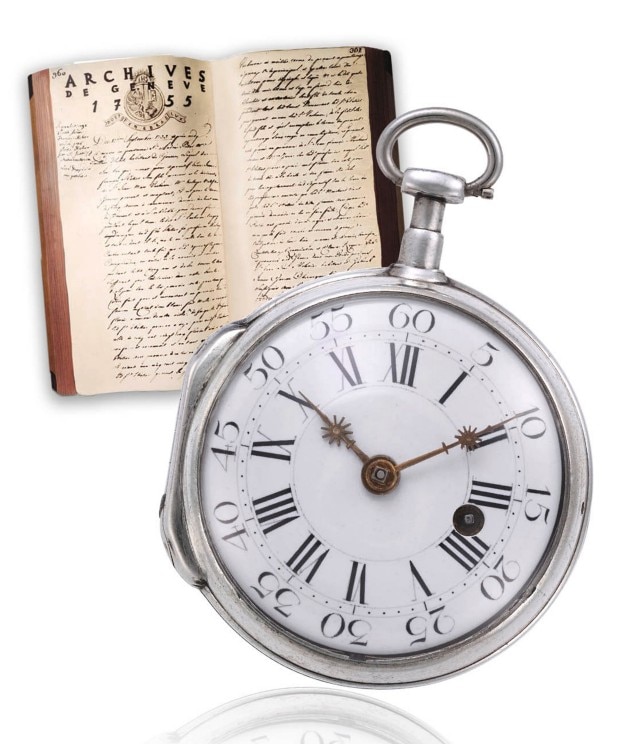
Origins
This ‘onion’ shaped silver pocket watch signed “JM Vacheron à Genève,” is the only timepiece known to bear the mark of the Maison’s founder, Jean-Marc Vacheron. The crown-wheel escapement features a balance cock with elegant arabesque openwork. With its enamel dial with roman numerals and a keyhole for winding, this piece attests the twofold commitment on which the Maison’s identity rests: a mastery of horological technique dedicated to aesthetic excellence.
Pocket watch, first known watch by founder Jean-Marc Vacheron in silver – Calibre 16''' key-winding movement – Circa 1755
A quest under the sign of the Maltese cross
From the start, the Manufacture distinguished itself for timepieces of great beauty: creations whose aesthetics are matched only by their flawless technical arrangement. For centuries, the Maison has endeavoured to harness technique in the service of style. Shrinking calibres and pursuing constant technical evolution has allowed Vacheron Constantin to demonstrate tremendous artistic creativity. The result is a signature touch, where a taste for innovation meets a keen sense of elegance.
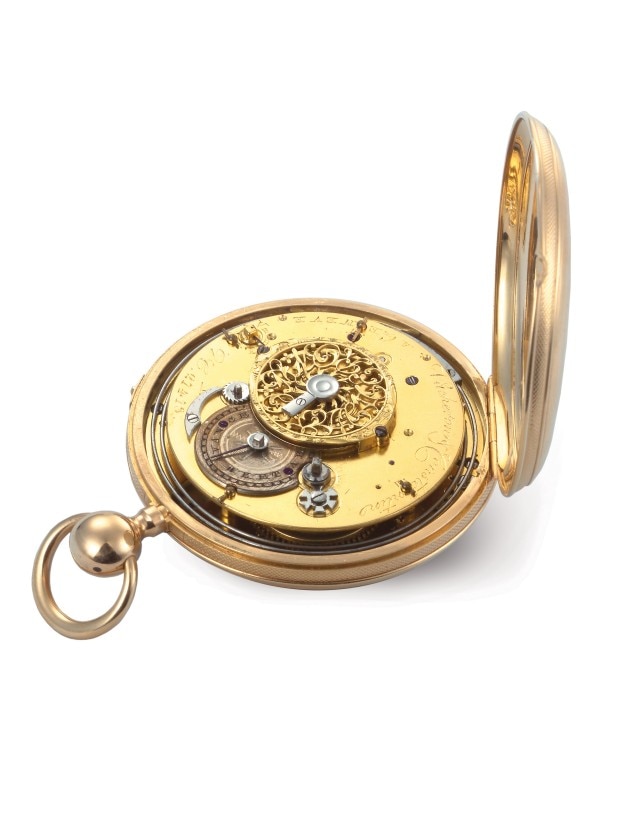
Vacheron Constantin's Maltese Cross symbol was registered with the Federal Trademark Office in 1880. Chosen to illustrate the Maison's quest for precision, the cross shape evokes the design of a component fixed to the barrel cover that provides the most constant power possible to the mainspring, ensuring a stable cadence and thus better accuracy.
18K pink gold guilloché pocket watch with quarter repeater – calibre 22’’’ incorporating a Maltese Cross-shaped component – 1831
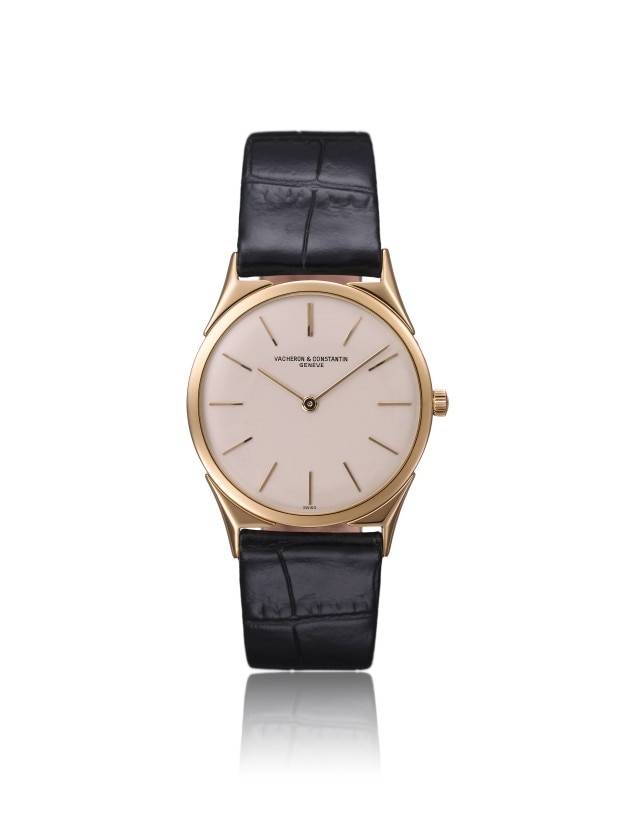
For the bicentenary celebrated in 1955, Vacheron Constantin presented this extremely slim gold watch with lugs recalling a Maltese cross. Purity of line is paramount in this 31.5-mm model, including the dial, punctuated only by yellow gold baton hour-markers. Renowned for its ultra-thin movements, Vacheron Constantin selected the Calibre 1003 for this Jubilee watch, a manual-winding movement that remained the world’s thinnest for many years at just 1.64 mm thick.
200th anniversary wristwatch – Model 6099, 18K yellow gold, Ultra thin, Calibre 1003 – 1958
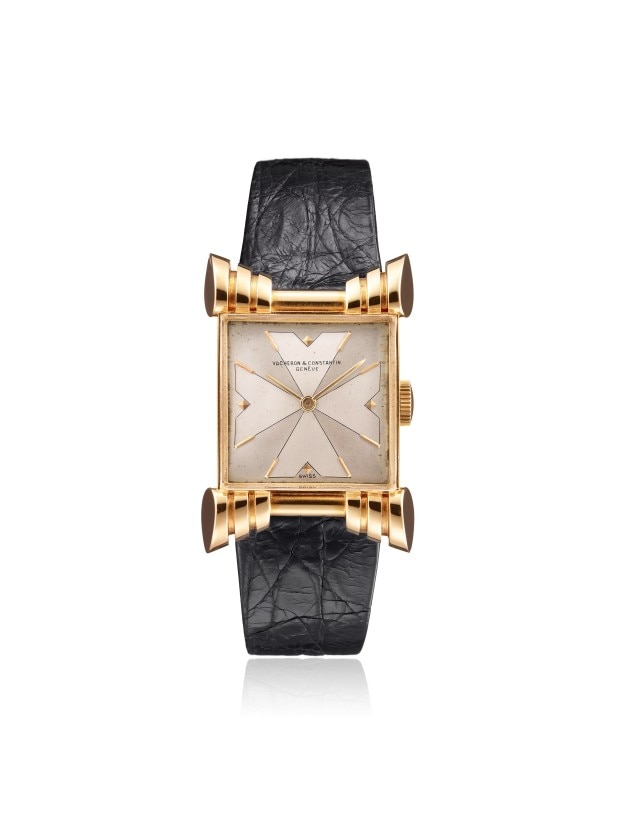
The quest for new forms has given rise to emblematic models that reflect both Vacheron Constantin's technical mastery and the Maison’s sense of aesthetics. This creative spirit is eminently on display in this 1950s creation whose dial features a Maltese Cross motif, produced using galvanic treatment, as well as lugs shaped like cornucopia.
18K yellow gold wristwatch, model 4695, Maltese cross motif dial – Calibre 458 – 1951
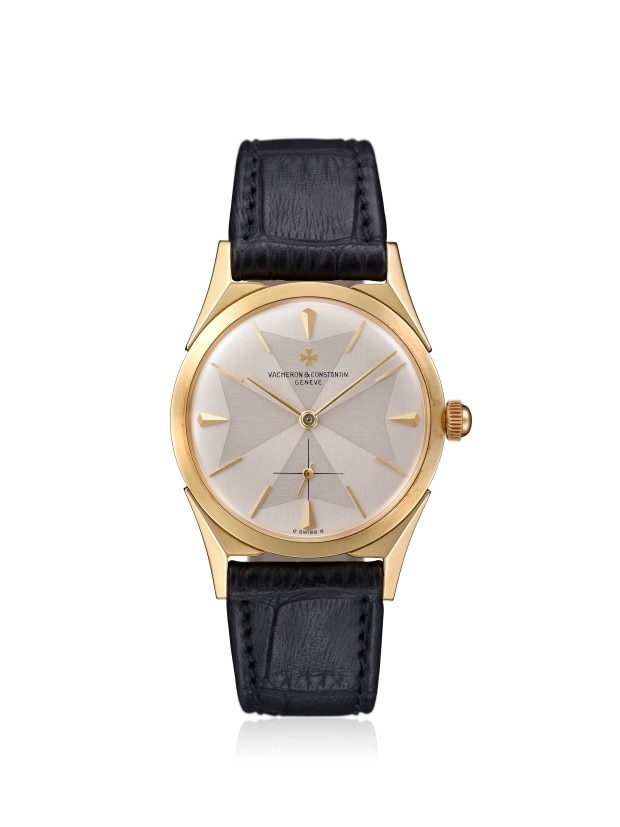
This timepiece, released for the Maison's bicentenary in 1955, features a background Maltese Cross motif on the dial, produced by galvanic treatment, an example of how the Maison’s creations reflect the scope for personal expression. With subtle harmony, technique and style mediate between the conventional and the atypical. Together, technical virtuosity and aesthetic refinement ensure that the allure of Vacheron Constantin timepieces spans the ages.
200th anniversary wristwatch - “Maltese Cross” model 6068 in 18k yellow gold, Calibre 1001, 1955
A quest of deep-rooted boldness
The Maison has a long legacy of watches in unique shapes, powered by exceptional movements. The 1910s and 1920s were especially creative periods. The quest for new forms engendered emblematic models reflecting the mechanical mastery of Vacheron Constantin. Following WWII, the Maison broke traditional codes with Art Deco style, developing complex rectangular and square timepieces, together with an array of sophisticated thin and round watches.
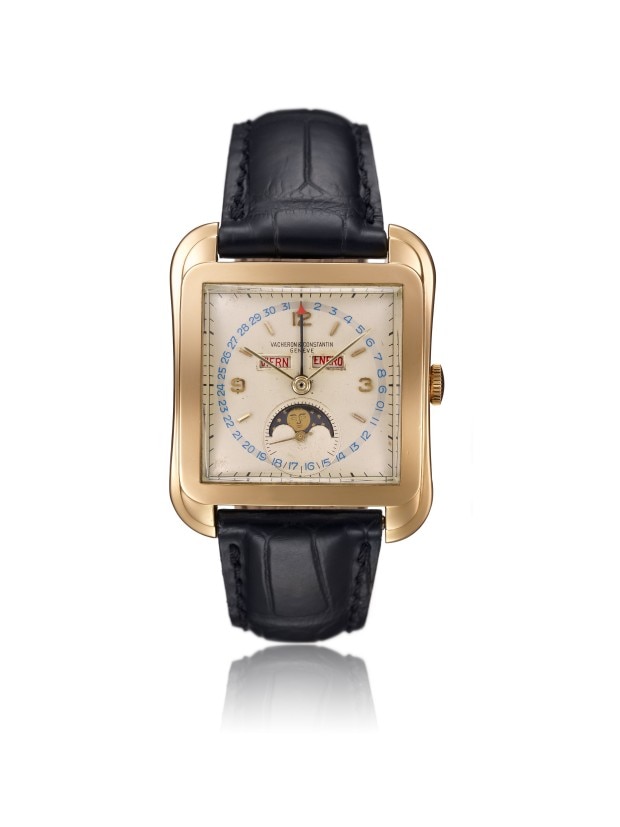
An emblematic watch produced in the 1950s and 1960s, here in yellow gold, this model owes its nickname: "Cioccolatone," to the distinctive contours of its rectangular case. With curved longitudinal sides framing a square bezel with rounded corners, it evoked a piece of Swiss chocolate. Featuring triple calendar and moon phase functions, the 4764 was an immediate success when released in 1952.
"Cioccolatone" wristwatch – Model 4764 in 18K yellow gold, triple calendar, moon phases – Calibre 485 – 1954
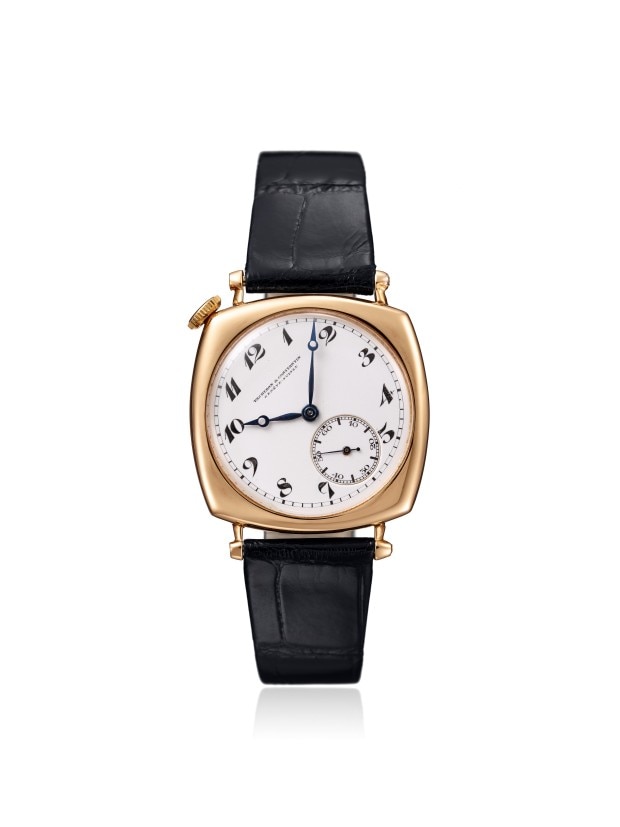
This avant-garde cushion-cased wristwatch was produced for the American market during the Roaring Twenties. Sporting a crown at 11 o'clock, the offset white enamel dial with its 11 Arabic numerals, minute scale and small seconds can be read at a glance, a true reflection of the Maison’s expertise and creative spirit. This emblematic model was reincarnated in 2008 with the launch of the “Historiques American 21,” released successively in several versions.
"American 21" wristwatch in 18K yellow gold – Calibre RA 11''' 62 – 1921
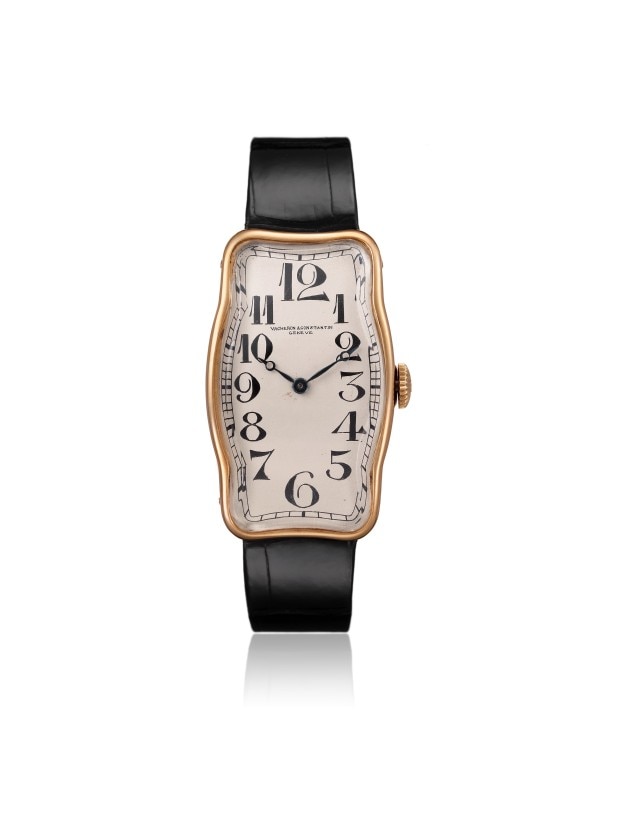
With its multiple curves, the avant-garde design of this “sole” model from 1917 represents a real break with the round shape of other watches from its era. The black enamel Arabic numerals follow the shape of the case, prefiguring the codes of Art Deco. At the time, wearing such a watch would have been the pinnacle of modernity.
Art Deco “sole” wristwatch in 18K yellow gold – Calibre RA 11''' N Art – 1917
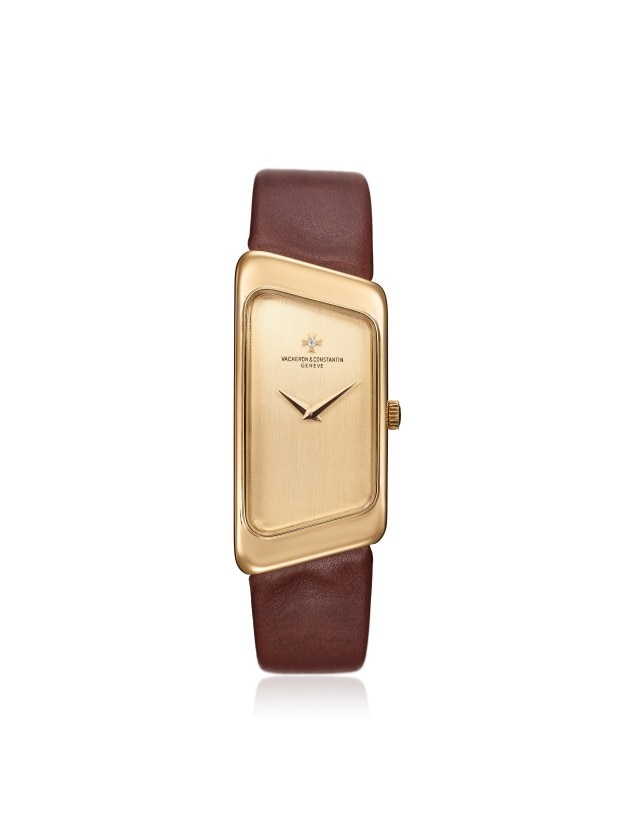
In 1972, Vacheron Constantin received the "Prestige de la France" award recognising the Maison’s more than 200 years of expertise. To celebrate, the Maison released a watch whose case resembled an isosceles trapezoid. Innovative and ergonomic, this model illustrates the quest for simplicity through new geometric codes and meticulous attention to detail: a dial without hour markers or minute track and a case with no lugs.
"Prestige de la France" wristwatch – Model 15207 in 18K yellow gold with asymmetrical case – Calibre 1052 – 1972
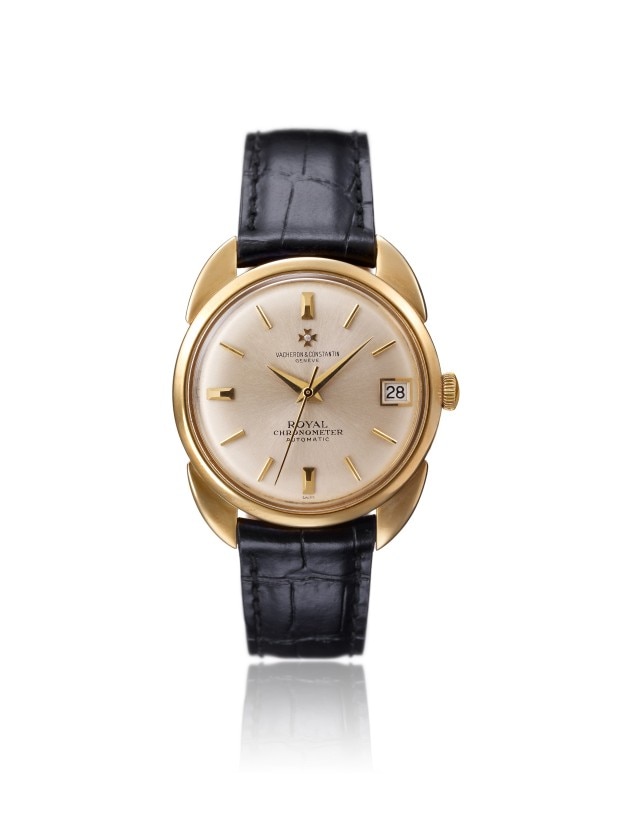
The “Chronomètre Royal” watch produced in 1907 was originally designed to withstand the climatic constraints of South America
(Brazil and Argentina) and the name trademarked that same year. Retaining the attributes of the 1907 version (robustness, resistance to dust and humidity, legibility and precision), subsequent models were influenced by the various trends of their time. This 6694 model from the 1960s stands out for the originality of its integrated concave lugs.
"Chronomètre Royal” wristwatch – Model 6694 in 18K yellow gold, date aperture at 3 o'clock – Calibre 1072 – 1966
A Quest to breathe life into Art
Since the 19th century brought international expansion, the Maison has embraced diverse cultures, lifestyles and traditions. This open-mindedness is visible in the myriad timepieces that illustrate styles and techniques from the decorative arts of various continents. This affinity has further grown thanks to the Métiers d'Art collection, via collaborations yielding exceptional series of timepieces.
From 2007 to 2009, Vacheron Constantin unveiled the 'Métiers d'Art' Les Masques series, paying tribute to the indigenous arts with reproductions of 12 masks from the Barbier Mueller collection.
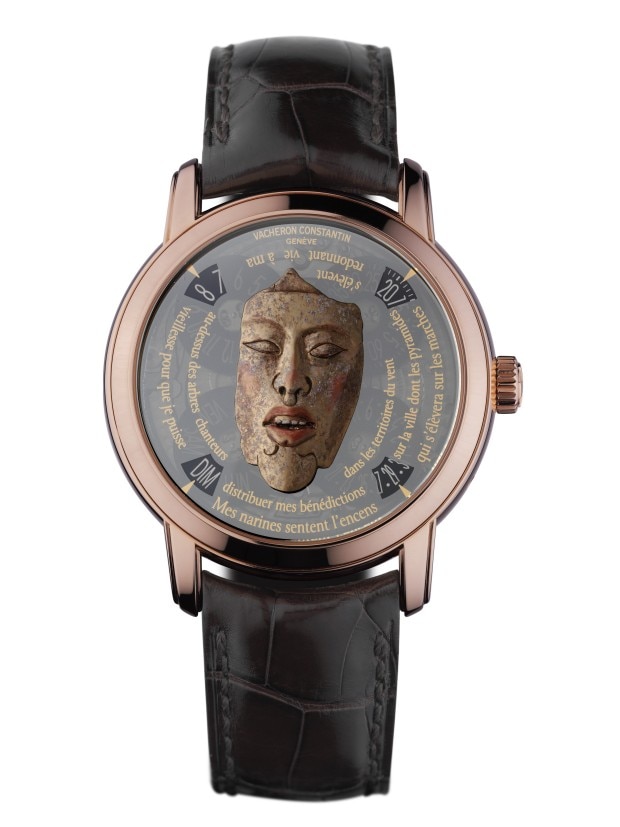
This timepiece features the portrait of a Mayan nobleman from the fragment of a Mexican incense burner. The sapphire dial bears verses by Michel Butor, inscribed in gold as a spiral around the mask. The hour, minute, day and date are indicated by discs revealed in four apertures around the rim of the dial.
“Métiers d'Art - Les Masques – Mexico” wristwatch in 18K pink gold with engraved dial, disc-type indicators and poem by Michel Butor in a gold-letter spiral – Calibre 2460 G4 – 2008
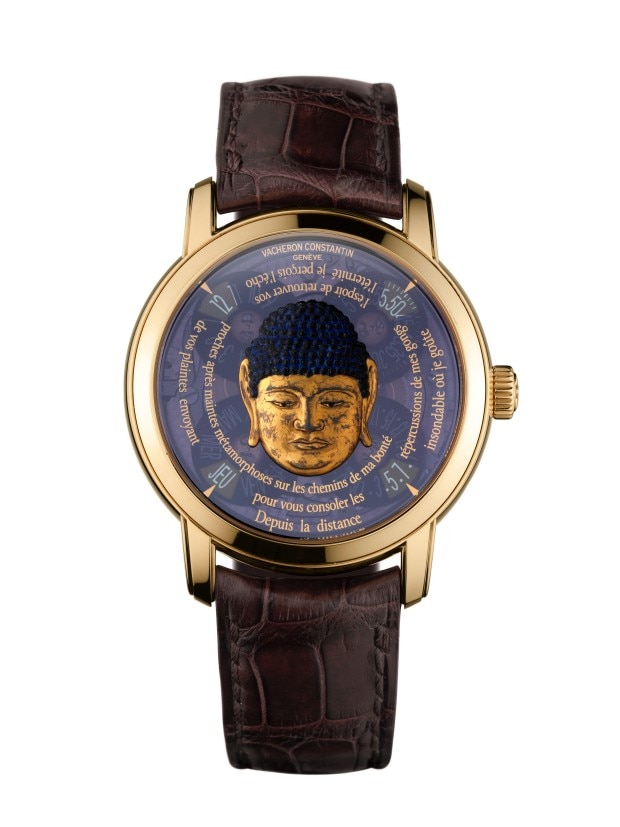
This timepiece features a Japanese Buddha mask meticulously reproduced as a chased gold applique. The sapphire dial bears verses by Michel Butor, inscribed in gold as a spiral around the mask. The hour, minute, day and date are indicated by discs revealed in four apertures around the rim of the dial.
“Métiers d'Art – Les Masques – Japan” wristwatch in 18K yellow gold with engraved dial, disc-type indicators and poem by Michel Butor in a gold-letter spiral – Calibre 2460 G4 – 2008
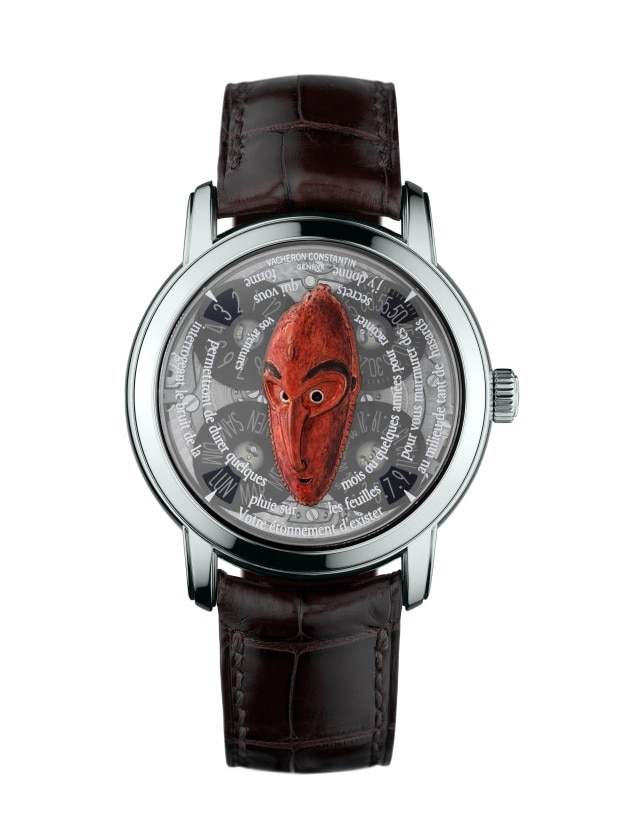
Here is a mask by the Kwélé of Gabon, pre-1930, reproduced as an incised gold applique. The sapphire dial bears verses by Michel Butor, inscribed in gold as a spiral around the mask. The hour, minute, day and date are indicated by discs revealed in four apertures around the rim of the dial.
“Métiers d'Art – Les Masques – Gabon” wristwatch in 18K white gold with engraved dial, disc-type indicators and poem by Michel Butor in a gold-letter spiral – Calibre 2460 G4 – 2008
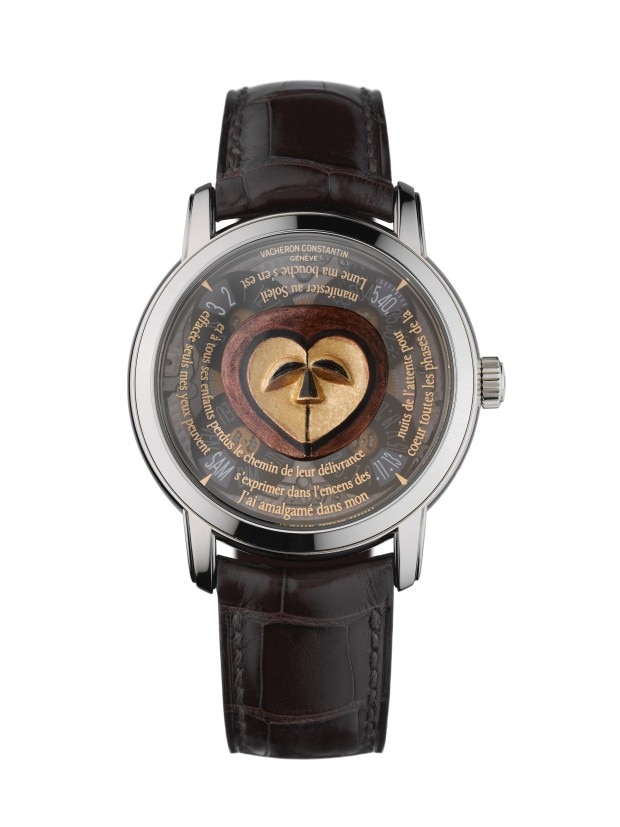
In this case, the timepiece features a Brag mask from Papua New Guinea. The sapphire dial bears verses by Michel Butor, inscribed in gold as a spiral around the mask. The hour, minute, day and date are indicated by discs revealed in four apertures around the rim of the dial.
“Métiers d'Art – Les Masques – Papua New Guinea” wristwatch in platinum with engraving, disc-type indications, poem by Michel Butor in a gold-letter spiral – Calibre 2460 G4 – 2008
A quest to the beat of innovation
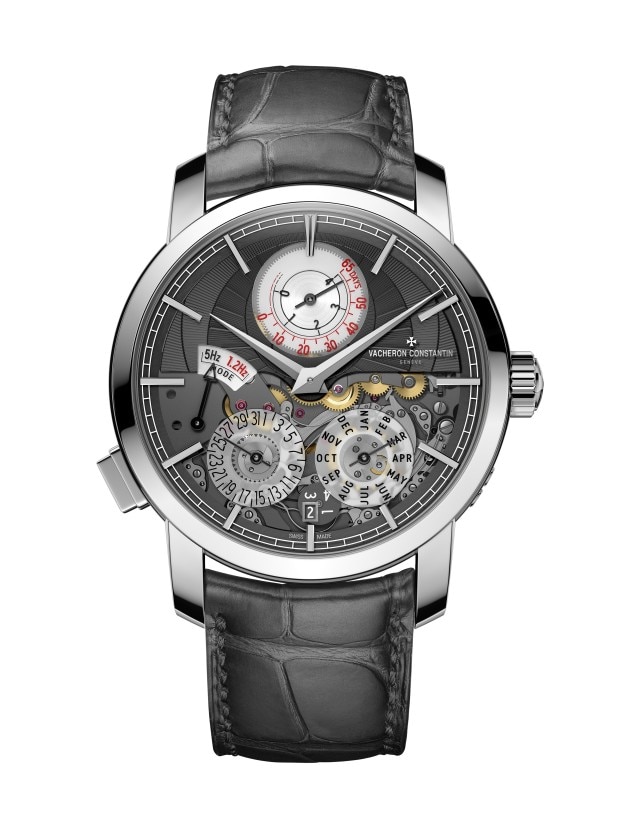
In 2019, Vacheron Constantin released the manual-winding Traditionnelle Twin Beat perpetual calendar, a dual frequency timepiece designed for ease of use. When worn, this model beats at a high frequency, consistent with today's lifestyle, displaying the hours, minutes, date, month, leap-year cycle and power reserve. When not in use, its owner can reduce the energy consumption of the in-house Calibre 3610 QP simply by pressing a pusher, yielding a power-reserve of at least 65 days.
"Traditionnelle Twin Beat" wristwatch in platinum, with instant perpetual calendar, 65-day power reserve, frequency mode – Calibre 3610 QP – 2019
A quest for new heights in complication
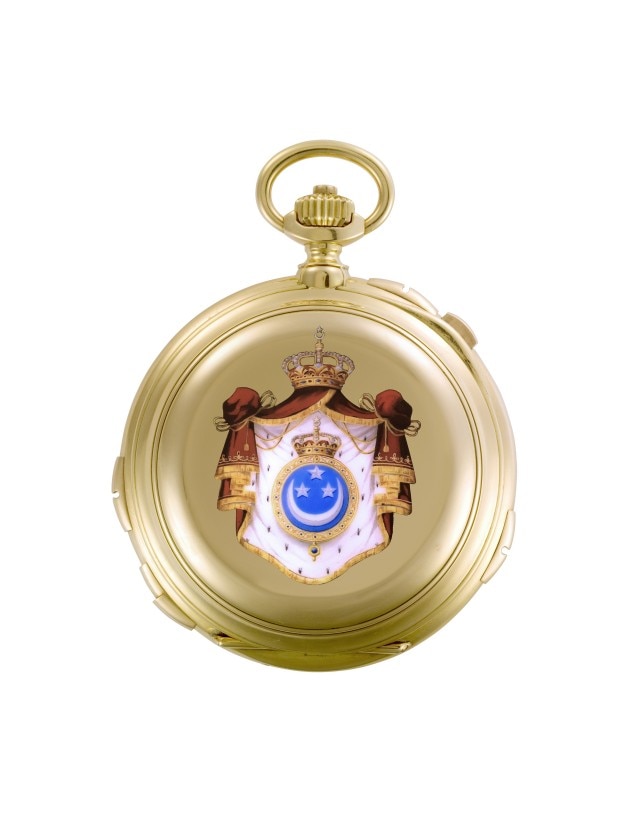
Presented by the Swiss Community of Egypt to King Fouad I in 1929, this pocket watch was the most complicated Vacheron Constantin of its era. Equipped with the Calibre RA 21'', it boasts 13 complications, including grand strike, small strike, a minute repeater, a perpetual calendar, day month and date calendars, leap-year cycle, moon phases and ages, a column-wheel chronograph with split seconds, and a minute counter. The caseback features the Royal Coat of Arms of Egypt in Geneva enamel.
Pocket Watch gifted to King Fouad The 1st, 18 K yellow gold, polychrome enamel, calibre RA 21''' 74/12 - 1929.
A quest that aims for the stars
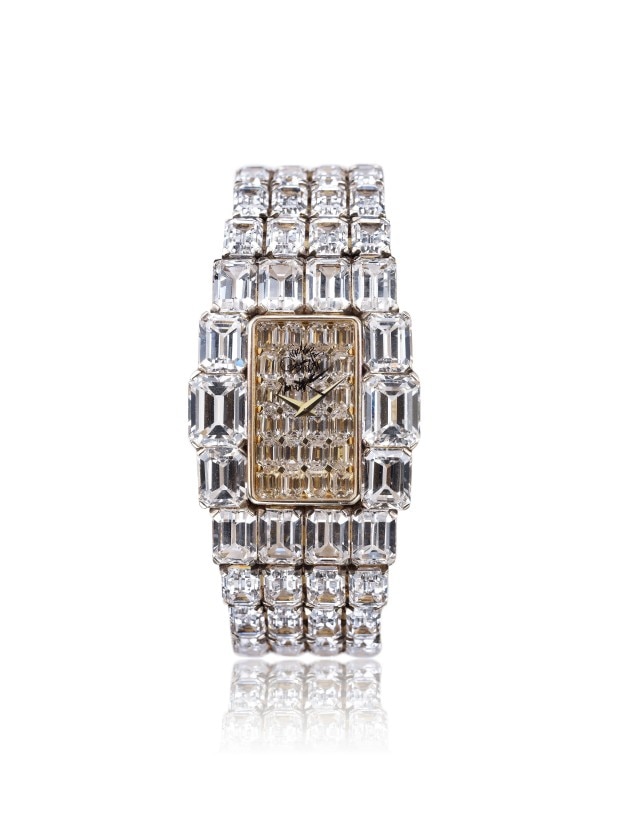
Carved from a gold ingot and set with 118 emerald-cut diamonds of great purity totalling some 130 carats, the ‘Kallista’ (most marvellous in Greek) is a dazzling horological creation. Presented at the time as the most expensive watch in the world, it attests the Maison’s expertise in the field of high jewellery. Created in collaboration with the artist Raymond Moretti, the watch reproduces the artist’s representation of a couple on the caseback.
Replica of the ‘Kallista’ wristwatch; original creation sculpted from a gold ingot, set with 118 diamonds (approx. 130 carats), Calibre 1052 – 1979
A quest that chimes in perfect harmony
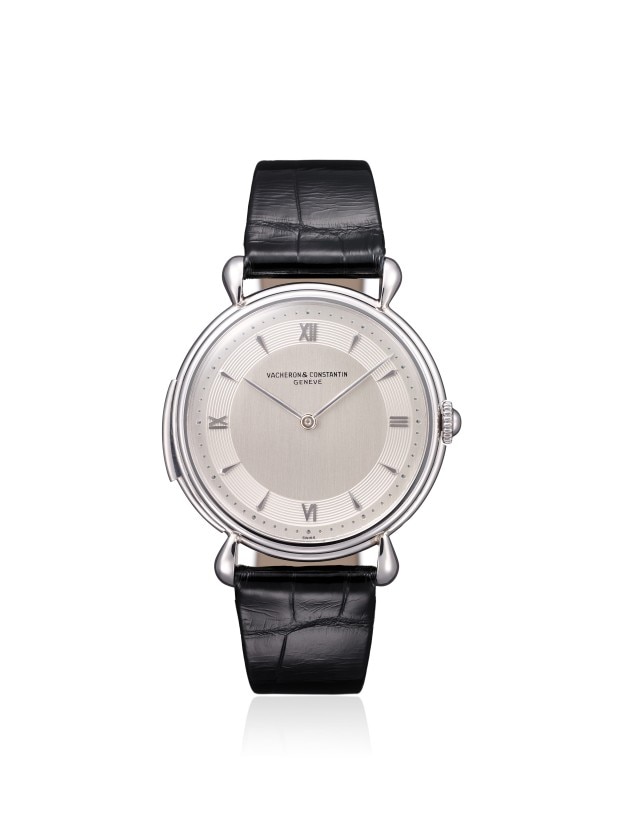
Since its creation, Vacheron Constantin has created numerous minute-repeater watches, a prestigious complication that is difficult to master, often with the further constraint of being ultra-thin. This 37-mm diameter platinum watch is an accomplished example, with its pure lines and a remarkably sonorous calibre measuring just 3.1 mm deep. Thanks to a middle with gadroons, the minute repeater’s trigger is subtly incorporated to the case
Model 4261 wristwatch, Platinum, ultra-thin, minute repeater, guilloché, Calibre RA 13''' – 1951
A quest for art and miniaturization
Launched in 2019, the partnership between Vacheron Constantin and the Louvre has given rise to a series of watches in the "Métiers d'Art" collection that celebrate four great civilisations of Antiquity through masterpieces from the museum’s collections. These limited-edition timepieces use rotating discs to display hours, minutes, days and dates. Positioned around the dial, the time and calendar windows leave a vast canvas for the Maison’s artisans to showcase decorative arts inspired by each period.
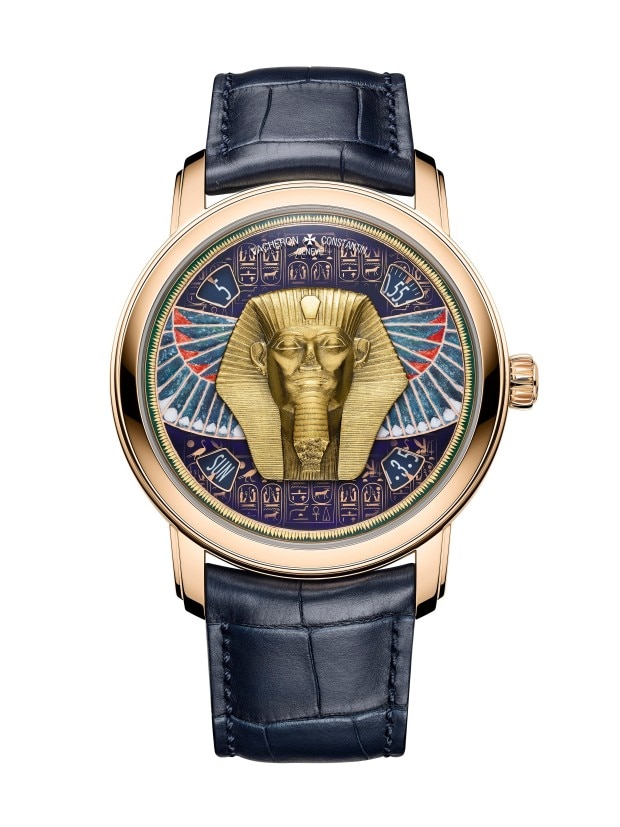
Ancient Egypt could not be better symbolised than by a sphynx, legendary creature with a human head and an animal body. The Sphinx of Tanis in pink Aswan granite, wearing the royal nemes headdress and owned by the Louvre since 1826, offers an exceptional source of inspiration for the creation of this Métiers d’art watch. The sphinx conveys the strength of the lion that is associated with the king’s duty to protect Egypt and ensures its continuity. A second source of inspiration for this timepiece is the cartonnage coffin a priest “head of the double House of Gold” and named Nakht-khonsou-irou, who is thought to have lived and officiated in the Theban region at the end of the 22nd Dynasty (circa 750 BC).
"Métiers d’Art - Tribute to great civilisations" - Grand sphinx de Tanis, enamelling, hand-engraving, stone micro-mosaic, stone marquetry - 2022
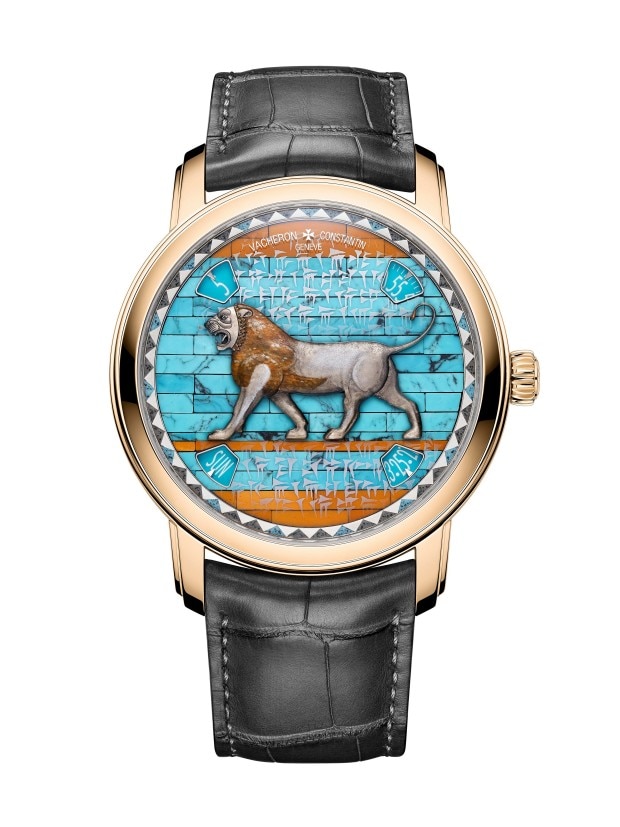
This timepiece dedicated to the Ancient East reflects all the richness and depth of Mesopotamian civilisations. To reflect this, it honours the two friezes from the Palace of Darius, which are among the masterpieces of Persian art preserved in the Louvre.
The famous lion of the eponymous frieze was chosen as a symbol. It represents the power of the Persian Empire of the Achaemenids. The king of animals is depicted in a threatening way, with its jaw open and it moves among the rosettes and lotuses with a measured and calmly majestic gait. The contemporary Frieze of Archers was chosen for its geometric decorative motifs. These are found on the dial periphery, made of engraved metal and champlevé enamel with inclusions to give an aged appearance.
"Métiers d’Art - Tribute to great civilisations" - Lion de Darius wristwatch, enamelling, hand-engraving, stone micro-mosaic, stone marquetry - 2022

A pivotal moment in Roman history, between the tragic end of the Republic and the beginnings of the Empire, the advent of Augustus established the hold on Rome of the Julio-Claudian Family, whose power was to last for almost a century. This dynasty has gone down in history with representatives such as Tiberius, Caligula, Agrippina and Nero, whose most tragic moments were recounted in the classical theatre of Corneille Racine and Shakespeare. To embody the Roman rule that was exercised over the entire ancient world surrounding the Mediterranean – referred to by Romans as Mare Nostrum – the bust of August was the obvious choice. The blue-green Grand feu enamelled dial ornamentation on this timepiece is inspired by ancient mosaic, a quintessential Roman decorative art involving a technique perfectly master in Rome from the century BC onwards and which spread throughout the Empire.
"Métiers d’Art - Tribute to great civilisations" - Buste d'Auguste wristwatch, enamelling, hand-engraving, stone micro-mosaic, stone marquetry - 2022
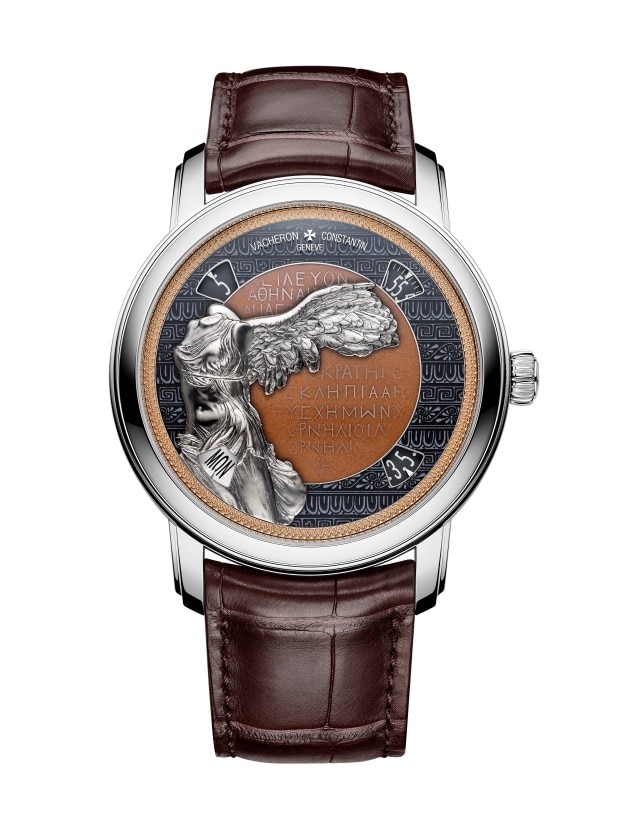
Represented as winged deity, Niké, the goddess of victory, daughter of the Titan Pallas, was first an “attribute” of Athena and Zeus which they carried in their hands in the form of small figures. Gradually, Victory gained a cult of her own , with wings outspread symbolising success in warfare or in other forms of endeavour. Niké was thus gradually recognised as a special mediator between the gods and men. This Victory of Samothrace is one of the most beautiful representations of this divinity. A masterpiece of Greek sculpture from the Hellenistic period, it is one of the major pieces in the Louvre. Concerning the decorative dial elements, the teams in charge of the project turned to Greek ceramics – an inexhaustible source of inspiration and a testimony to their era. The Pergamon vase, a marble masterpiece sculpted in bas-relief in the second century BC, served as a model for the frieze surrounding the dial.
Métiers d’Art - Tribute to great civilisations" - Victoire de Samothrace wristwatch, enamelling, hand-engraving, stone micro-mosaic, stone marquetry - 2022
A quest of creating artistry, mechanically
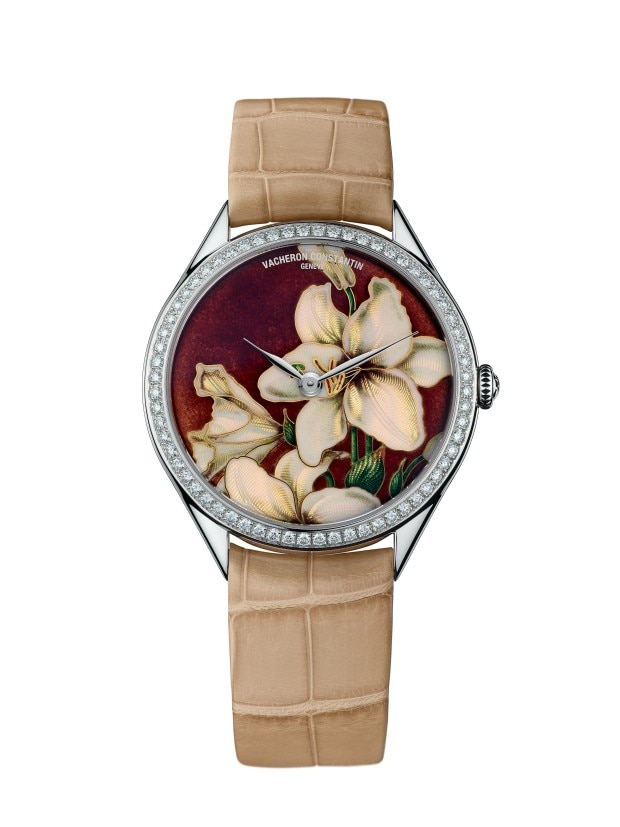
The Métiers d'Art "Florilège" collection perpetuates a longstanding attachment to floral art. This series of watches was inspired by illustrations from The Temple of Flora, published in 1799 by the English botanist Robert John Thornton. This piece, representing a white lily, highlights the hand guilloché technique, in echo of Dr Thornton's engraving plates, and cloisonné enamel, which recalls the original paintings. Lastly, the diamond-set bezel affirms the precious nature of these dials.
"Métiers d'Art" Florilège “White Lily” wristwatch in white gold, with cloisonné Grand Feu enamel, figurative guilloché – Calibre 4400 – 2014
A quest ever forward, and occasionally jumping back
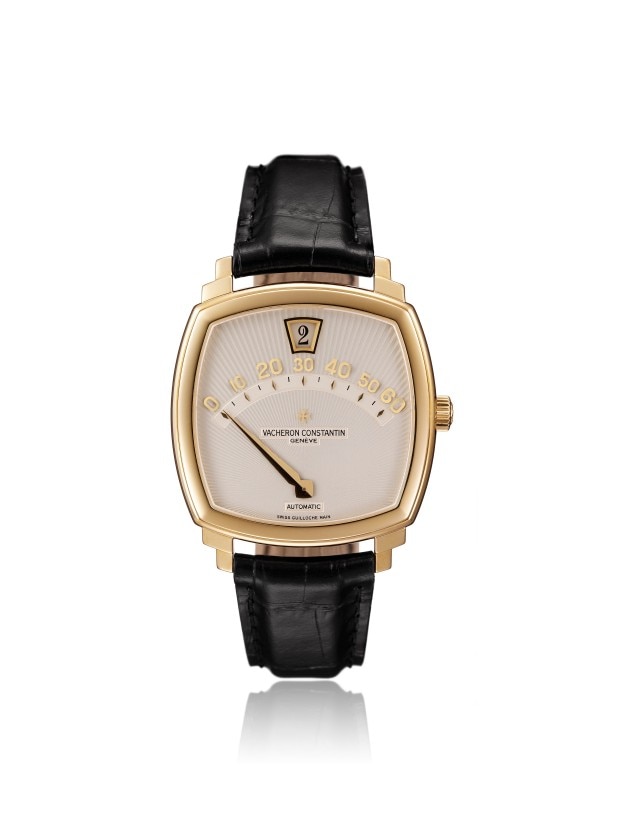
The Maison has showcased jumping indications since the early 19th century, notably its famous window watches, which have a jumping disc at 12 o'clock. Greater ease of reading was later introduced by combining the complication with retrograde minutes, as in this Saltarello from 1997. Driven by the ultra-thin automatic Calibre 1120, this model has a cushion case with terraced lugs, while the dial features hand guilloché radiating from the axis of the minute hand.
"Saltarello" wristwatch - Model 43041 in 18K yellow gold with guilloché, jumping hours and minutes retrograde display – Calibre 1120 –1998
A quest, perfect from start to... Finishing !
The Maison distinguished itself early on by developing timepieces perfectly adapted to the requirements of scientists, explorers and athletes. As early as the 1850s, these watches were appreciated for their reliability and precision, taking numerous prizes in chronometry competitions. A century later, the 1970s brought hard-wearing watches with integrated bracelets and highly legible dials, creating a whole new segment of sporty chic products consistent with lifestyles of the era.
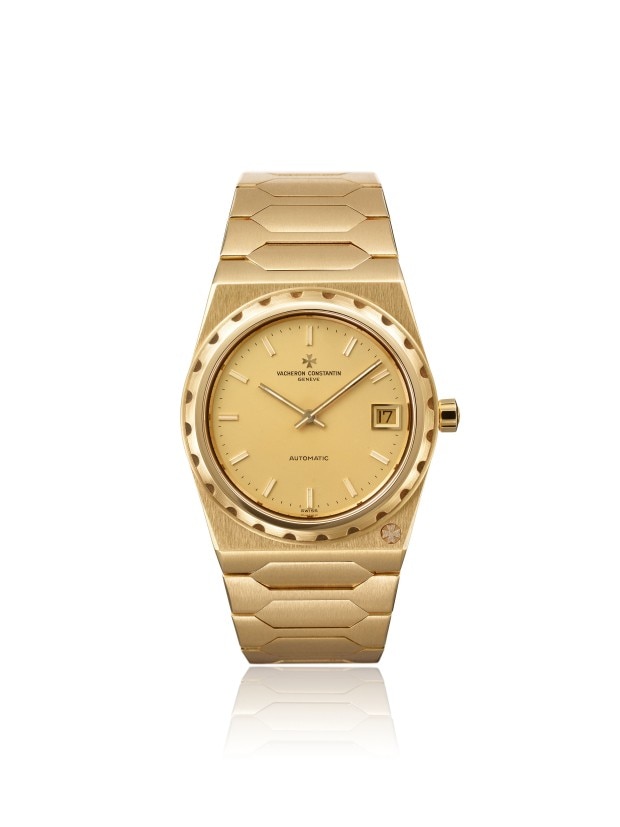
In 1977, for the Maison’s 222nd anniversary, Vacheron Constantin unveiled a watch with a slim yet robust silhouette, enhanced by a grooved bezel and integrated bracelet. Considered the company's first emblematic sports model, the 222 was produced in several versions. Powered by the ultra-thin self-winding Calibre 1121, just 3.05 mm thick, the 37-mm diameter 44018/411 illustrate the clean, elegant profile characteristic of the 222.
"222" wristwatch - Model 44018/411 in 18K yellow gold with date aperture– Calibre 1121 – 1985
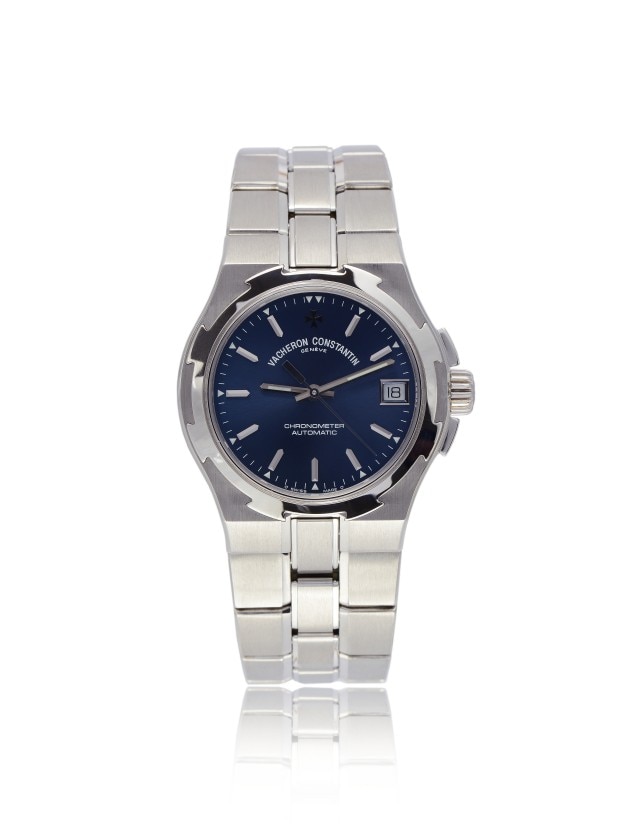
It was the Overseas collection, launched in 1996 and a direct descendant of the "222", that consolidated the Maison’s place in the world of elegant sports watches. Inspired by the concept of travel, the Overseas was first offered in three sizes with self-winding movements and water resistant to 150 metres. Reference 42052, powered by one of the first COSC-certified automatic movements, has luminescent hands for hours and minutes, with central seconds and date on a white guilloché dial.
“Overseas” wristwatch – Model 42052 in stainless steel with date aperture – Calibre 1311 – 2000

The second-generation of Overseas demonstrates a significant evolution towards a watch both sportier and bolder, particularly the luminescent hour-markers and hands, which are wider and heavier. An anti-magnetic lining enhances the resistance of the case and its guaranteed water-resistance to 150 metres. Measuring 42 mm in diameter, the 47040 model is equipped with the 11½’’’ automatic Calibre 1226, a self- winding movement with a 40-hour power reserve.
"Overseas" wristwatch – Model 47040 in stainless steel with date aperture – Calibre 1226 – 2004
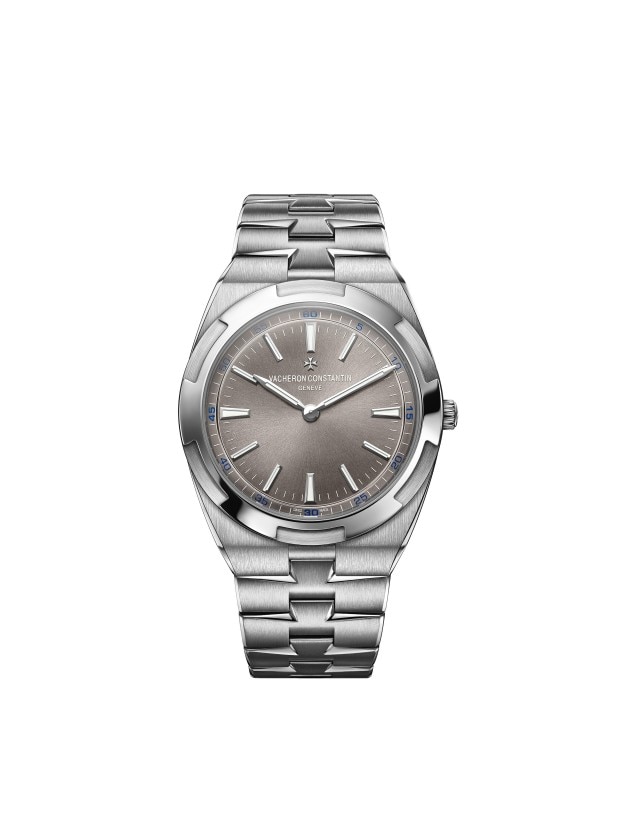
The Overseas Ultra-thin watch has a subdued appearance at first glance. This 2000V model meets the stringent requirements of the Poinçon de Genève. Its 40-mm case in 18K white gold houses the ultra-thin, self-winding Calibre 1120. With a power reserve of around 40 hours, this reference displays hours and minutes on a grey dial punctuated by facetted hands and luminescent gold hour-markers. The sapphire crystal of the caseback reveals the hypnotic ballet of its 22K gold oscillating weight.
"Overseas" wristwatch – Model 2000V in 18K white gold, ultra-thin– Calibre 1120 – 2016
A quest for the truly essential
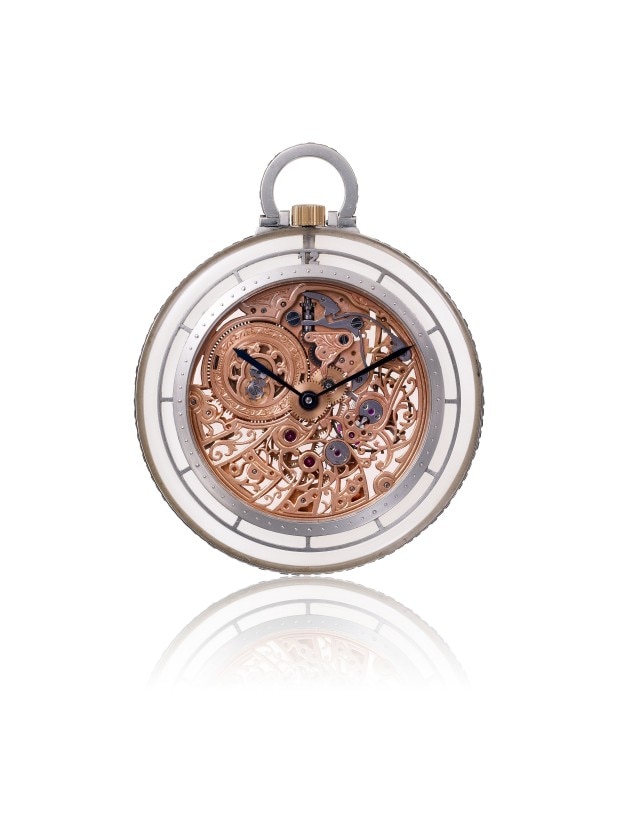
Vacheron Constantin takes care to craft its timepieces to ensure that the watchmaking technique deployed is as attractive as its housing. To illustrate, Vacheron Constantin presents this skeleton pocket watch, directly inspired by Art Deco creations of the 1920s. The technical prowess involved is reflected in the opulently decorated red gold skeleton movement, housed in a rock crystal case with a sapphire-set caseband, accentuating the overall effect of transparency.
Bespoke pocket watch in rock crystal and platinum – Skeletonised Calibre 16''' 162 – 1953
A quest for precision, 8.5 billion seconds long.
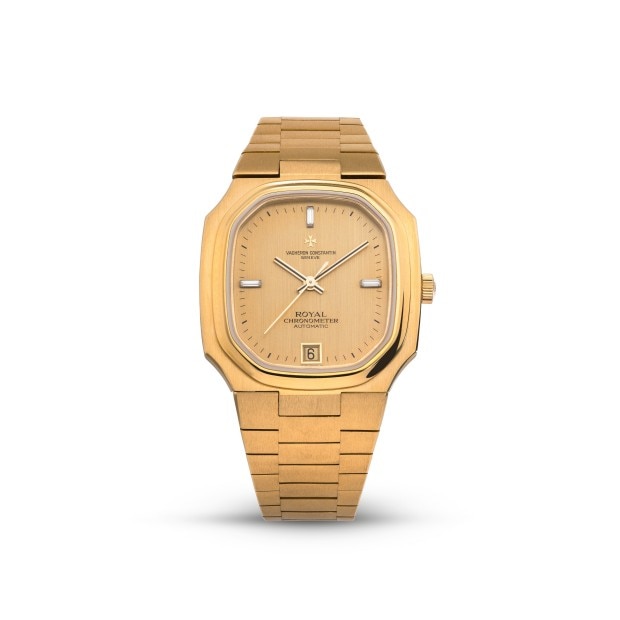
The Chronomètre Royal collection helped perpetuate the Maison’s reputation for precision for a new century, starting with a pocket watch released in 1907 and registration of the “Chronomètre Royal” trademark that same year. Launched in 1975, the model 2215, originally available in yellow gold or stainless steel, was one of the Maison’s most emblematic 1970s models. Featuring an integrated metal bracelet and eye-catching case, this timepiece houses calibre 1096 with instantaneous date and stop seconds.
“Chronomètre Royal” wristwatch – Model 2215 In 18K pink gold – Calibre 1096 – 1977
